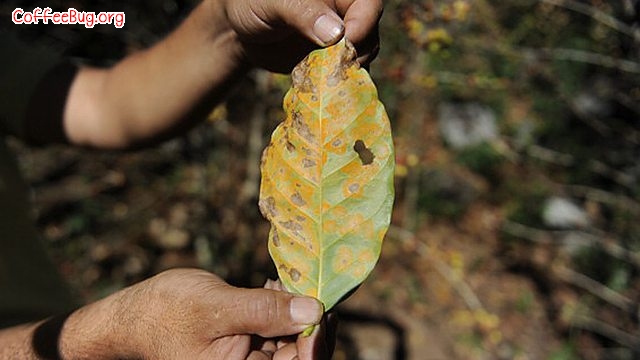What is the disease of coffee planting that harms coffee leaf rust?
Coffee leaf rust was discovered in Central America as early as 40 years ago, but recent outbreaks in Central America (Colombia, Costa Rica, El Salvador, Guatemala, Nicaragua) and Mexico are by far the most serious. Guatemala, Honduras, Costa Rica and other countries have declared a national state of emergency.
The president of Guatemala says leaf rust will reduce coffee production in Guatemala by 40% in the 2013-14 season. Guatemala accounts for 14% of global coffee raw bean production, so a rise in coffee prices will be inevitable.

In the past 20 to 25 years, there has been a strong global demand for raw coffee beans. In order to increase production, many coffee farmers in Central America have abandoned the traditional shade planting technique and adopted the "sun exposure" method to grow coffee. Due to the loss of the protective effect of "tree crown" and the reduction of biodiversity, the control of diseases and insect pests can only rely more on the use of pesticides and fungicides, which not only destroys the original complex ecological network, but also leads to the reduction or even disappearance of white halo fungus, which can control insects and caffeine leaf rust, resulting in a large-scale outbreak of leaf rust.
What is more serious is that the deterioration of the ecological environment and ecosystem may lead to more complex problems.
The unanswered question is: is this large-scale outbreak of leaf rust the first appearance of a single event or a new normal event?
Leaf rust is the most serious coffee disease. It first appeared in Lake Victoria in East Africa in 1861 and ravaged Sri Lanka in 1867, resulting in the destruction of the Sri Lankan coffee industry. It soon spread to many parts of Southeast Asia and eventually spread to the entire southern, central and western African coffee producing regions.
Before 1970, leaf rust had not been found in the Western Hemisphere until the outbreak of leaf rust in Bathia, Brazil, in 1970. since then, leaf rust has been found in all coffee producing areas in the world.
Leaf rust is mainly caused by the infection of coffee leaves, buds and new coffee fruits, which leads to the death of coffee trees; coffee rust spores spread the lesions on the lower side of the leaves through the wind and Rain Water.
Important Notice :
前街咖啡 FrontStreet Coffee has moved to new addredd:
FrontStreet Coffee Address: 315,Donghua East Road,GuangZhou
Tel:020 38364473
- Prev

WBC World Barista Competition Review Rules Notes
WBC is a worldwide coffee competition since 2000. The World Barista Competition 2006 was held in Bonn, Switzerland in May this year. A total of 39 countries participated in the competition. The reason why I introduced the WBC rules to coffeeing friends in detail is that I hope everyone can have a correct understanding of the game itself. World Barista Competition Organizing Committee
- Next

The ideal coffee match for women of 12 constellations
Aries (3.21-4.19) Italian Coffee with distinct love and hate, you are so vigorous that you will never flinch. In order to match the hasty pace of Aries, a cup of ebullient Italian coffee is the ideal choice. Aries (3.21-4.19) Italian coffee with a clear distinction between love and hate, you are very strong and will never flinch, in order to match the hasty pace of Aries, a cup
Related
- Beginners will see the "Coffee pull flower" guide!
- What is the difference between ice blog purified milk and ordinary milk coffee?
- Why is the Philippines the largest producer of crops in Liberia?
- For coffee extraction, should the fine powder be retained?
- How does extracted espresso fill pressed powder? How much strength does it take to press the powder?
- How to make jasmine cold extract coffee? Is the jasmine + latte good?
- Will this little toy really make the coffee taste better? How does Lily Drip affect coffee extraction?
- Will the action of slapping the filter cup also affect coffee extraction?
- What's the difference between powder-to-water ratio and powder-to-liquid ratio?
- What is the Ethiopian local species? What does it have to do with Heirloom native species?

